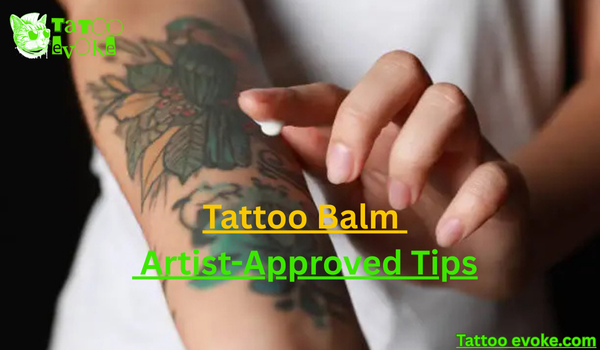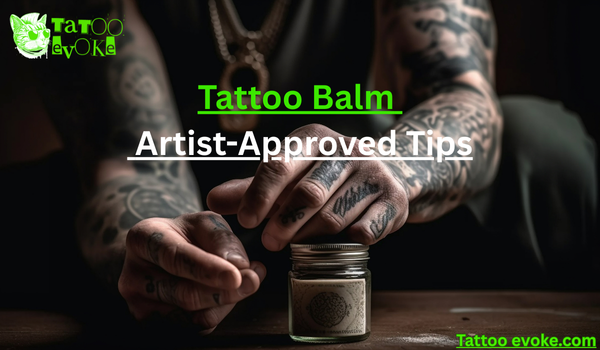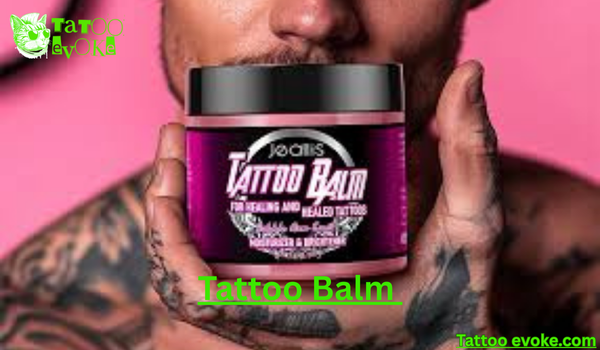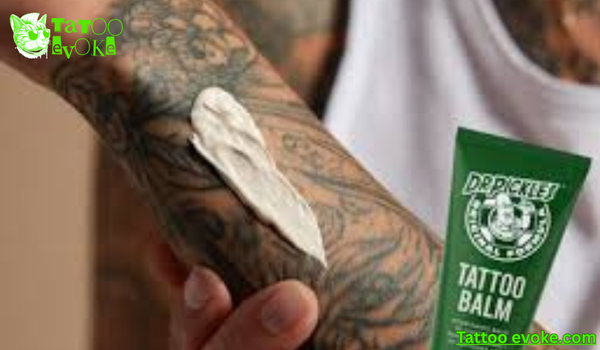Fresh ink deserves exceptional care, and choosing the right tattoo moisturizer can make the difference between a lifetime masterpiece and a faded disappointment. Your newly tattooed skin enters a vulnerable healing phase where proper aftercare products become essential for optimal tattoo healing and long-term color vibrancy.
Professional tattoo artists consistently emphasize that quality aftercare balm isn’t just recommended—it’s absolutely critical/important. “I tell every client that the first two weeks determine how their tattoo will look for the next twenty years,” explains Sarah Chen, a master tattoo artist with fifteen years of experience. “The right healing balm makes all the difference.”
Unlike regular body moisturizers, specialized tattoo care products contain carefully selected natural ingredients that support skin repair without interfering with ink settling. These therapeutic balms create the ideal environment for healthy tattoo healing while protecting your investment in professional body art.
Understanding Tattoo Balm: Science Meets Artistry

Tattoo balm represents the gold standard in post-tattoo skincare, specifically formulated to address the unique needs of healing tattooed skin. Think of it as your tattoo’s personal bodyguard—a protective barrier that nourishes while promoting accelerated healing and ink preservation.
Dr. Michael Rodriguez, a dermatologist specializing in tattoo aftercare, notes:
“The key difference between regular lotions and professional tattoo balms lies in molecular structure and ingredient selection. Quality balms contain bioavailable nutrients that penetrate deeper and support cellular repair more effectively.”
Premium tattoo balms harness the power of botanical ingredients like organic jojoba oil, unrefined coconut oil, and raw shea butter. These skin-loving ingredients provide deep moisturization without pore clogging, ensuring your fresh tattoo can breathe while staying perfectly hydrated.
Clinical benefits include:
- Enhanced healing speed through antimicrobial protection
- Reduced scabbing and minimized peeling during recovery
- Superior color retention for vibrant, long-lasting tattoos
- Non-greasy absorption that won’t stain clothing or bedding
- Anti-inflammatory properties that soothe irritated skin
- Protective barrier formation against environmental damage
Many certified dermatologists emphasize that consistent moisture retention directly correlates with tattoo longevity. When skin maintains optimal hydration levels, it resists cracking, excessive peeling, and infection—factors that could permanently damage your artistic investment.
Premium Ingredients: The Building Blocks of Excellence
Understanding tattoo balm ingredients empowers you to choose products that deliver professional-grade results. The most effective formulations combine time-tested natural oils with modern skincare science.
Foundation Moisturizers:
- Cold-pressed jojoba oil – Mimics skin’s natural sebum, absorbs completely without greasy residue
- Virgin coconut oil – Provides antimicrobial protection with deep moisturizing benefits
- Organic shea butter – Rich in vitamins A, E, and F for intensive skin repair
- Raw mango butter – Smooths texture while preventing dryness and flaking
Therapeutic Herbal Extracts:
- Calendula flower extract – Anti-inflammatory properties reduce redness and swelling
- Lavender essential oil – Natural antiseptic with calming aromatherapy benefits
- Tea tree oil – Antimicrobial powerhouse that soothes irritation naturally
- Chamomile extract – Gentle healing support for sensitive skin types
Advanced Protective Elements:
- Pure beeswax – Forms breathable barrier that locks in moisture
- Vitamin E complex – Antioxidant protection prevents premature aging
- Rosemary extract – Natural preservation with circulation-boosting properties
Jessica Martinez, formulation chemist for premium skincare brands, explains:
“The magic happens when these ingredients work synergistically. High-quality tattoo balms use precise ratios that maximize bioavailability while maintaining skin compatibility across all types.”
Premium formulations avoid harsh chemicals, synthetic fragrances, and pore-clogging agents that could interfere with healing. Look for products featuring USDA organic certification, cruelty-free testing, and pharmaceutical-grade ingredient sourcing for optimal safety and effectiveness.
Ingredient Benefits Quick Reference Table
Quick Ingredient Benefits Reference
| Ingredient | Primary Benefit | Skin Type | Best Stage |
|---|---|---|---|
| Jojoba Oil | Deep absorption | All types | All stages |
| Shea Butter | Intense repair | Dry/sensitive | Active healing |
| Coconut Oil | Antimicrobial | Normal/oily | Fresh tattoos |
| Calendula | Anti-inflammatory | Sensitive | Active/settlement |
| Tea Tree | Antiseptic | Normal (patch test first) | Fresh/active |
| Beeswax | Protective layer | All types | All stages |
Mastering Professional Application Techniques

Proper tattoo balm application technique significantly impacts healing outcomes and final tattoo appearance. Professional tattoo artists recommend following these evidence-based steps for optimal results.
Expert Application Process:
- Sanitize thoroughly – Always begin with freshly washed hands to prevent bacterial contamination
- Measure precisely – Scoop a pea-sized amount; excessive product can clog pores and slow healing
- Warm strategically – Rub balm between clean fingertips until it reaches body temperature for easy spreading
- Apply methodically – Massage gently using small circular motions, ensuring complete coverage without over-manipulation
- Layer appropriately – Create a thin, breathable layer that absorbs within 2-3 minutes
Timing and Frequency Guidelines: Apply 2-3 times daily during the active healing phase (typically 7-14 days). Morning application should follow gentle cleansing, while evening application prepares your tattoo for overnight recovery.
Marcus Thompson, award-winning tattoo artist, shares:
“I tell clients to apply balm like they’re petting a baby bird—gentle, purposeful, and with complete respect for the healing process. Proper technique matters as much as product quality.”
Professional Tips for Success:
- Clean fingertip application provides better control than cotton swabs
- Wait 10 minutes after cleansing before applying balm
- Never over-apply—excess product creates bacterial breeding grounds
- Maintain consistent timing to establish optimal healing rhythm
- Monitor skin response and adjust frequency based on individual healing speed
Your tattoo remains hypersensitive during initial healing, making gentle application essential. Aggressive rubbing or excessive manipulation can disrupt ink settling and create uneven healing patterns that affect final appearance.
Creating Your Own Professional-Grade Balm
DIY tattoo balm creation allows complete control over ingredient quality and formulation purity. This beginner-friendly recipe uses organic ingredients that rival commercial premium products.
Essential DIY Tattoo Balm Recipe:
Premium Ingredients:
- 3 tablespoons organic coconut oil (unrefined)
- 2 tablespoons raw shea butter
- 1 tablespoon cold-pressed jojoba oil
- 1 teaspoon pure beeswax (sustainably sourced)
- 8 drops calendula oil (optional but recommended)
- 4 drops lavender essential oil (therapeutic grade)
Professional Preparation Method:
- Sanitize workspace and all utensils using 70% isopropyl alcohol
- Heat base ingredients (coconut oil, shea butter, beeswax) in double boiler until completely melted
- Remove from heat and cool to approximately 45°C (113°F)
- Whisk in liquid oils (jojoba, calendula, lavender) until thoroughly blended
- Pour into sterilized containers and allow complete cooling before use
Safety and Quality Considerations: Always patch test homemade formulations on untattooed skin 24 hours before use. While DIY balms can be highly effective, commercial products undergo rigorous safety testing and quality assurance that ensures sterility and batch consistency.
Dr. Lisa Park, cosmetic chemist, advises:
“Home formulation can produce excellent results, but maintaining proper preservation and contamination prevention requires careful attention to sterile technique and storage protocols.”
Storage and Shelf Life: Store DIY balms in cool, dark locations and use within 4-6 months for optimal freshness and potency. Consider creating small batches to maintain ingredient integrity and prevent oxidation.
Specialized Care Through Healing Stages
Your tattoo’s needs evolve throughout the healing journey, requiring stage-appropriate care for optimal outcomes. Understanding these phases helps you provide targeted support at each critical period.
Pre-Session Preparation (Optional): Some professional artists approve topical numbing creams containing lidocaine or benzocaine for pain management during lengthy sessions. Apply numbing gel to clean, dry skin 45-90 minutes before your appointment, following artist-specific guidelines.
Immediate Aftercare (Days 1-3): Fresh tattoos require gentle protection while initial bleeding subsides. Your tattoo artist will apply professional bandaging (Saniderm, traditional gauze, or second-skin dressings) based on tattoo size, location, and individual healing characteristics.
Active Healing Phase (Days 4-14): This critical period demands consistent aftercare with premium tattoo balm applied 2-3 times daily. Proper moisturization prevents excessive scabbing while supporting healthy tissue regeneration and optimal ink settling.
Settlement Stage (Weeks 2-4): Healing intensity decreases, but consistent care remains important. You may reduce application frequency to 1-2 times daily while monitoring skin response and adjusting accordingly.
Long-term Maintenance: Mature tattoos benefit from ongoing care with specialized enhancement balms designed to preserve vibrancy, prevent fading, and maintain skin health. Regular moisturization protects against environmental damage and premature aging.
Carlos Rivera, master artist with 20 years experience, explains:
“Different healing stages require different approaches.
Fresh tattoos need gentle healing support, while settled tattoos can handle richer,
more nourishing formulations designed for long-term preservation.”
Healing Stage Care Table
| Healing Phase | Timeline | Application Frequency | Key Focus |
|---|---|---|---|
| Fresh | Days 1-3 | Follow artist bandaging | Prevent infection |
| Active | Days 4-14 | 2-3x daily | Stop scabbing, keep skin hydrated |
| Settlement | Weeks 2-4 | 1-2x daily | Support ink settling |
| Maintenance | Ongoing | As needed | Preserve vibrancy & color |
Tallow-Based Balms: Traditional Excellence

For those seeking alternative skincare approaches, grass-fed tallow balms offer unique benefits rooted in traditional healing methods. These ancestral skincare products combine beef tallow with complementary ingredients like extra virgin olive oil and raw Manuka honey.
Tallow’s Unique Advantages: Grass-fed tallow closely mimics human skin lipids, making it exceptionally biocompatible and easily absorbed. This nutrient-dense ingredient provides fat-soluble vitamins (A, D, E, K) in highly bioavailable forms that support cellular repair and regeneration.
Premium tallow balm benefits:
- Exceptional absorption without greasy residue
- Rich vitamin profile supporting skin barrier repair
- Natural antimicrobial properties from grass-fed sources
- Long-lasting moisturization ideal for dry climates
- Suitable for sensitive skin types with minimal allergenic potential
However, tallow balms aren’t universally appropriate. Vegan individuals, those with beef allergies, or people following plant-based lifestyles should choose botanical alternatives. Always discuss unconventional aftercare products with your tattoo artist before use.
Managing Scabbing and Itching Naturally
Scab formation represents a normal healing response, but proper management prevents complications that could affect tattoo appearance. Quality aftercare with premium balms minimizes excessive scabbing while supporting natural healing processes.
Professional Scab Management:
- Never pick, scratch, or pull at forming scabs
- Maintain consistent moisturization with thin balm applications
- Resist itching urges by gently patting affected areas instead of scratching
- Wear loose, breathable clothing to prevent fabric irritation
- Sleep on clean bedding and avoid abrasive materials
Natural Itch Relief Strategies: Cool compresses provide temporary relief without disrupting healing processes. Apply clean, damp cloths for 5-10 minutes when itching becomes intense. Avoid ice directly on skin, as extreme cold can damage healing tissues.
Dr. Amanda Chen, dermatologist specializing in wound healing, notes:
“Patient education about normal healing responses prevents premature interference with natural processes.
Proper scab management through consistent moisturization typically results in complete healing within 2-3 weeks.”
Warning Signs Requiring Professional Attention: Consult your tattoo artist or dermatologist immediately if you experience excessive redness, unusual swelling, persistent pain, fever, or discharge that suggests infection or allergic reaction.
Pain Management: Beyond the Session
While tattoo balm primarily serves aftercare purposes, understanding pain management options helps you prepare for comfortable healing. Numbing products and cooling gels can provide relief during sensitive healing periods.
Topical Pain Relief Options: Over-the-counter numbing creams containing lidocaine (2-5%) offer temporary relief for post-session discomfort. Cooling gels with menthol provide soothing sensations without numbing effects.
Important Considerations: Not all tattoo artists approve numbing product use, as these can affect skin texture and ink absorption. Always discuss pain management preferences with your artist before your appointment to ensure compatibility with their technique and expectations.
Natural Pain Management: Deep breathing exercises, meditation techniques, and distraction methods help manage discomfort without chemical intervention. Proper hydration and balanced nutrition support your body’s natural healing responses and pain tolerance.
Advanced Bandaging Techniques and Aftercare

Different bandaging methods require specific aftercare approaches tailored to material characteristics and healing objectives. Understanding these variations ensures optimal results regardless of your artist’s preferred method.
Traditional Bandaging: Standard gauze and medical tape typically remain in place 2-4 hours post-session. Remove carefully to avoid tissue trauma, clean gently with antibacterial soap, and wait 1-2 hours before initial balm application.
Advanced Film Dressings: Saniderm, Tegaderm, and similar transparent films may remain 24-72 hours based on artist recommendations. These waterproof barriers allow showering while protecting from contamination. Remove slowly and follow standard cleaning protocols before transitioning to balm-based care.
Specialized Aftercare: Small tattoos and fine linework may require modified approaches. Delicate designs sometimes benefit from extended protection or reduced manipulation during initial healing.
Professional artist Mike Torres explains:
“Bandage selection depends on tattoo characteristics, client lifestyle, and individual healing patterns.
I customize aftercare instructions based on these multiple factors to ensure optimal outcomes.”
Never deviate from your artist’s specific instructions. They understand your tattoo’s unique requirements based on size, location, technique used, and your individual skin characteristics. When uncertain about aftercare steps, contact your tattoo studio for clarification rather than guessing.
Professional Conclusion: Investing in Excellence
Premium tattoo balm represents far more than simple moisturizer—it’s a strategic investment in preserving your artistic expression and maintaining skin health for decades to come. Professional-grade aftercare makes the difference between a tattoo that ages gracefully and one that fades into disappointment.
Key success factors include:
- Choosing high-quality products with proven ingredients like organic jojoba oil, raw shea butter, and therapeutic botanicals
- Following consistent application routines with proper technique and appropriate timing
- Adhering to professional aftercare instructions provided by your experienced tattoo artist
- Understanding healing stages and adapting care to meet evolving needs
Remember that exceptional aftercare begins with professional artist selection and continues through your entire tattoo journey. Invest in quality products, maintain consistent routines, and never compromise on ingredient purity or application technique.
Your tattoos tell your story—protect that narrative with aftercare excellence that honors your investment and celebrates your artistic choices. Start with premium balm, establish daily routines, and enjoy vibrant, healthy tattoos that look as bold today as they will decades from now.
Ready to elevate your tattoo care routine? Choose professional-grade balm, commit to consistent application, and experience the confidence that comes from knowing your ink receives the exceptional care it deserves.
FAQS
1. When should I start using tattoo balm?
You should apply tattoo balm 24–48 hours after getting inked, once the bandage is removed and the skin is clean. This early moisturization supports faster healing, prevents dryness, and protects ink vibrancy during the crucial first two weeks.
2. How often should I apply tattoo balm?
Apply a thin layer of tattoo balm 2–3 times daily during the healing phase (days 4–14). Over-applying can clog pores, while under-applying leads to dryness. Maintain a light, breathable layer for optimal hydration and ink preservation.
3. What ingredients are best for tattoo aftercare?
The best tattoo balms contain natural, skin-friendly ingredients like shea butter, jojoba oil, coconut oil, calendula, beeswax, and vitamin E — all of which soothe, moisturize, and protect tattooed skin.
4. Can tattoo balm prevent scabbing and fading?
Yes. Regular use of a high-quality tattoo balm prevents excessive scabbing, minimizes peeling, and preserves color vibrancy by keeping the skin nourished and protected.
5. What should I avoid while my tattoo heals?
Avoid swimming, soaking in water, direct sunlight, scratching, or wearing tight clothes. These can cause infections or damage your tattoo during the healing process.
Explore More: Related Article
Best Tattoo Aftercare Routine for Sensitive Skin: Gentle Steps for Fast Healing
What Soap Should I Use to Wash My Tattoo? A Comprehensive Guide to Safe Aftercare
7 Reasons Why is CeraVe Lotion Good for Tattoos : Expert Insights
is bactine good for tattoos? 5 Essential Facts You Need to Know
How to become a Tattoo Removal Technician: 6-Step Guide for Success
